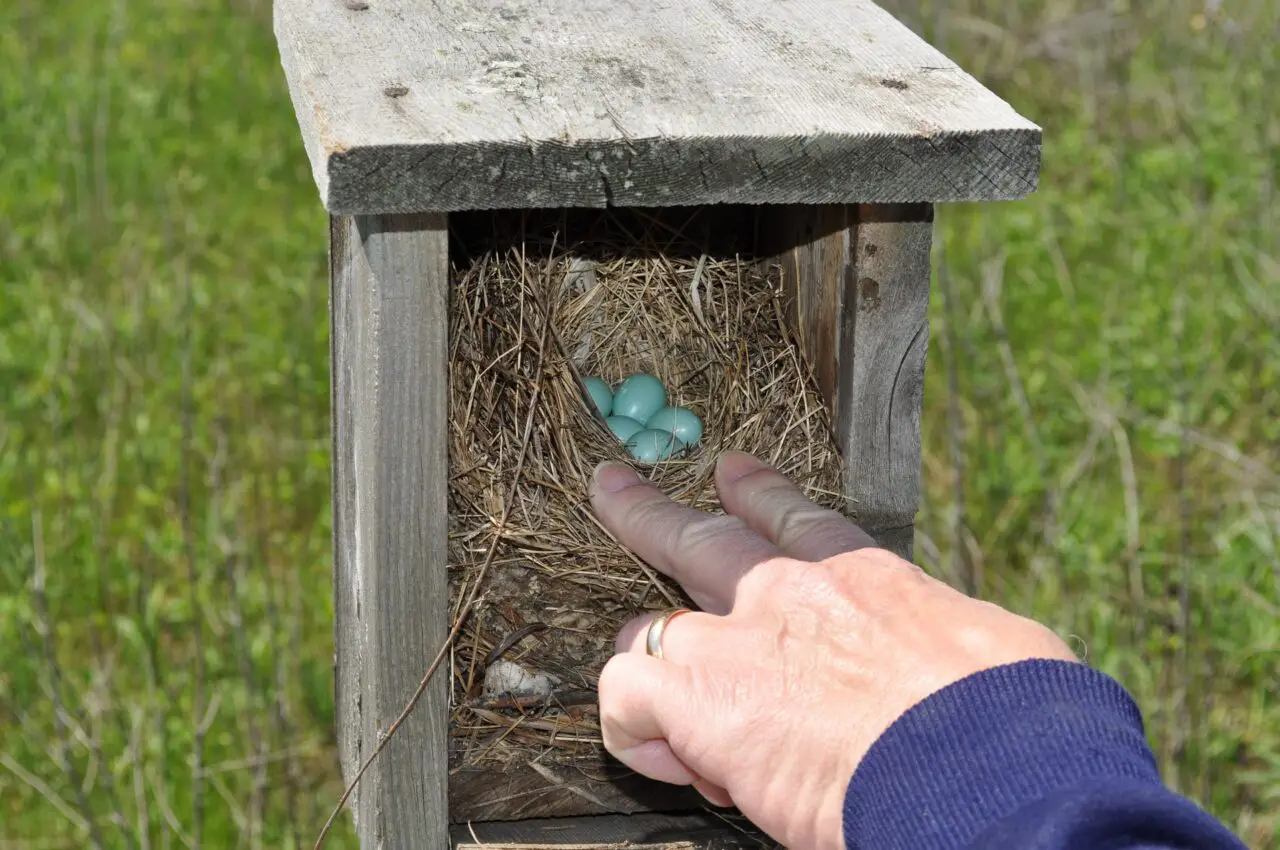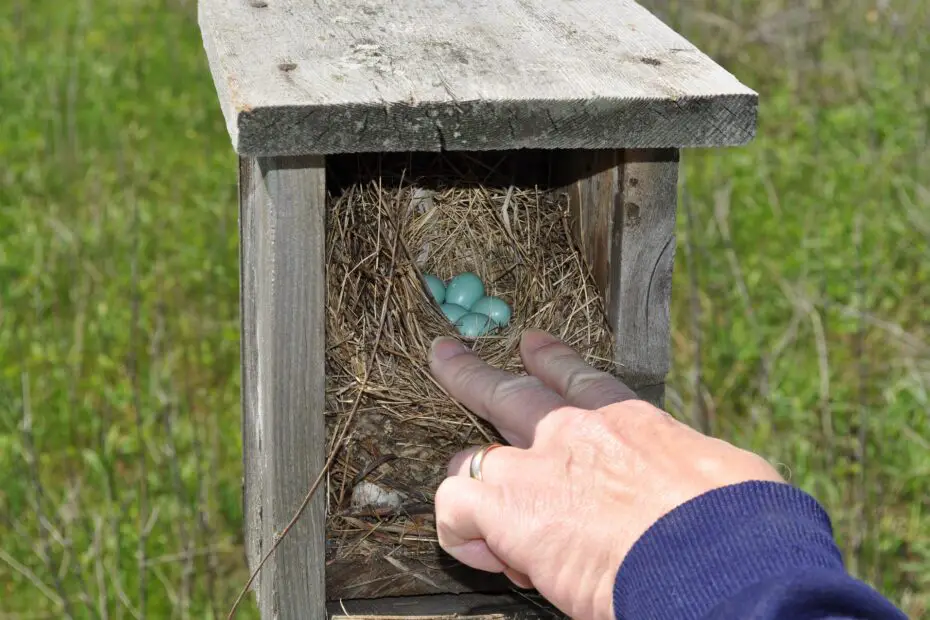Where to find bluebird eggs? The bluebird – Sialia sialis is one of three species of sialia found in the northern hemisphere of the Americas. The other two species are the blue-throated sialia – Sialia mexicana and the mountain sialia – Sialia currucoides. Sialias are related to the thrushes (Turdidae). Of the three species, the range of the red-throated sialia, of which 5 subspecies are known, is the largest.
The entire eastern part of North America they can be found. During the breeding season, these sialias migrate as far north as Canada to nest. You can find bluebird eggs in bushes. After the breeding season, they migrate south again as far as midway across the United States.
In captivity they are strong birds that can cope well with colder climate. A heated night shelter is not necessary. However, they do need at least one place where they can take shelter during the coldest months of the year. Even during last winter, the birds only came into the night pen because I had the feeders there.
You may also want to read about red bird care.
Sex distinction
The plumage of the male is rusty brown underneath with gray spots and a red breast, while the top of the head, back and tail are a beautiful blue. Length varies between 14 – 19 cm.

Specific characteristics
Red-throated sialias are tolerant birds outside the breeding season, but during the breeding season they fiercely defend their territory. Especially birds with similar colors in their plumage are seen as rivals. So beware! Unlike the birds I kept in the past, the birds are very tolerant of each other. You can even call it sweet. Regularly I saw the male offering the female a cricket or a white mealworm.
Sialias breed in the wild in natural tree cavities, but an abandoned woodpecker hole will also do just fine. In cultivated areas, they make grateful use of the nest boxes that people put up for these birds. In gardens, they are common and welcome birds because they eliminate quite a few pests and especially because of their beautiful colors.
Environment
Eastern bluebirds tend to live in open country around trees, but with little understory and sparse ground cover. Original habitats likely include open, often burned pine savannas, beaver ponds, mature but open forests and forest openings. Today, they are most common along pastures, agricultural fields, suburban parks, backyards and even golf courses. This bird is also found in eastern North America and as far south as Nicaragua.
You can also house them in captivity. To avoid any trouble I decided to be on the safe side by making the new home free of inmates. The first 3 days they stayed in the night loft where I could observe them well. Then they had access to a well vegetated outdoor flight of 4.00m x 2.25m x 2.00m with an adjoining heated night pen (min. +10 degrees Celcius) of 2.40m x 0.75m x 1.50m. The flight is 1/3 covered with acrylic sheets.
Food and breeding, bluebird eggs
As a diet outside the breeding season, I give different kinds of insect-based universal food. I also cut a slice of tofu (soy cheese) into small dice daily and mix it into the universal food. They like to take this. A few white mealworms daily and a scoop of buffalo. Sometimes a few crickets or wax moth larvae. In winter I also give fruit (pieces of apple, pear, grape, elderberries etc) which they like to take.
In the breeding season I increase the amount of live food. When they have bluebird eggs you have to feed them more in case the chicks hatch. With mealworms I don’t have a very good experience. I find that especially the males become very aggressive with them. I have not observed this with white mealworms. I recently noticed that they also love egg food.
